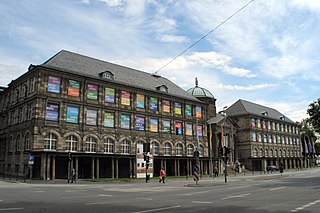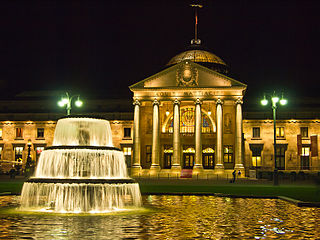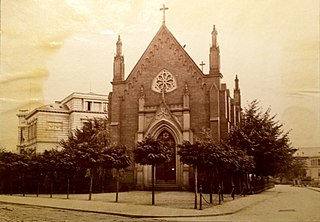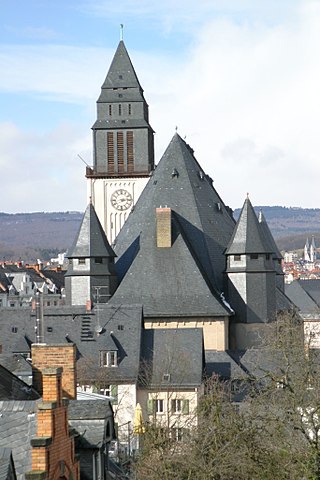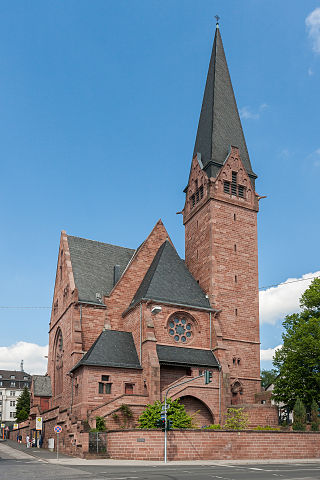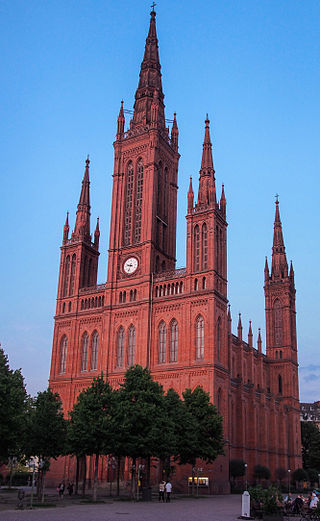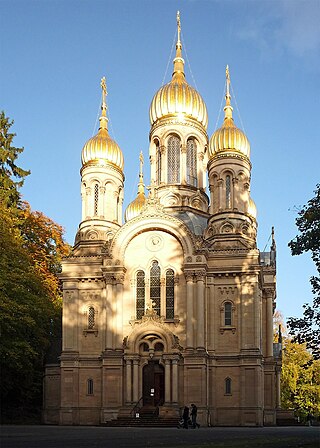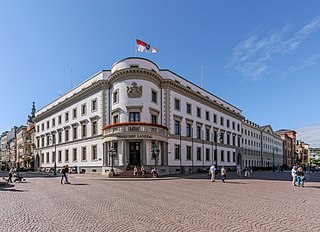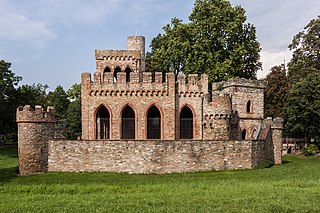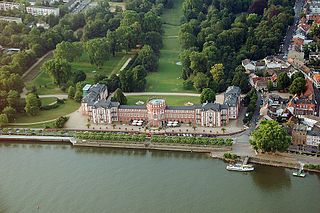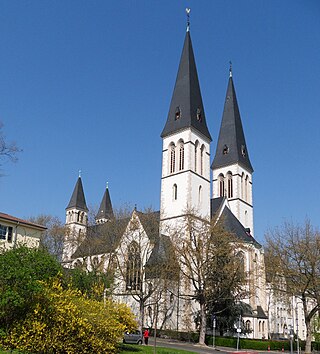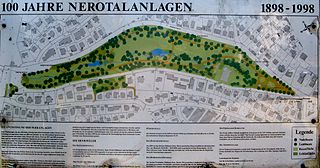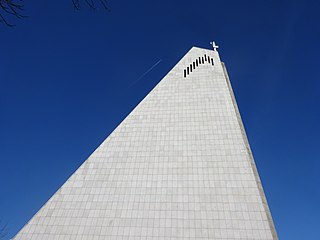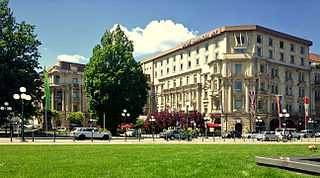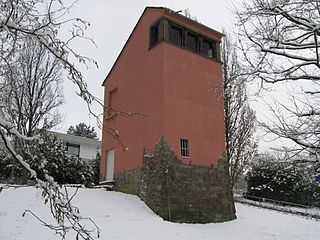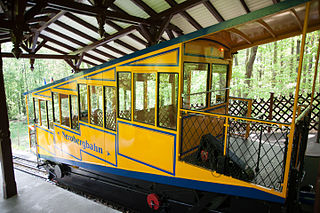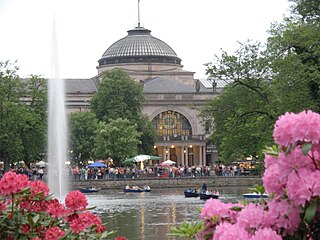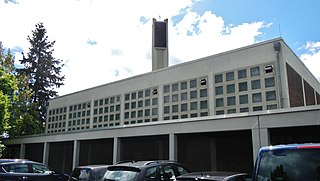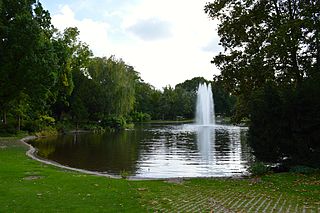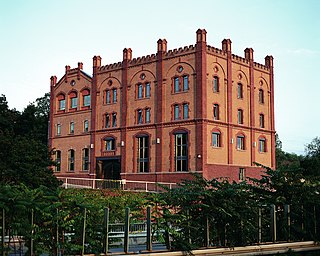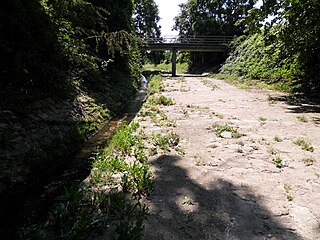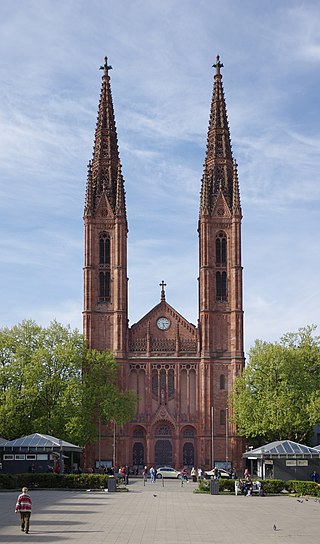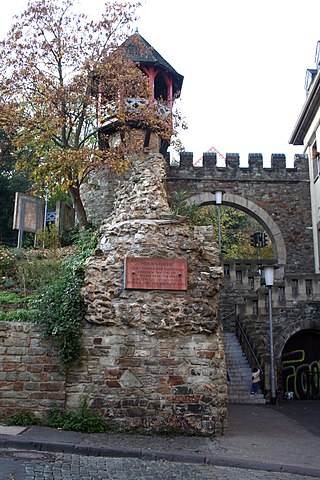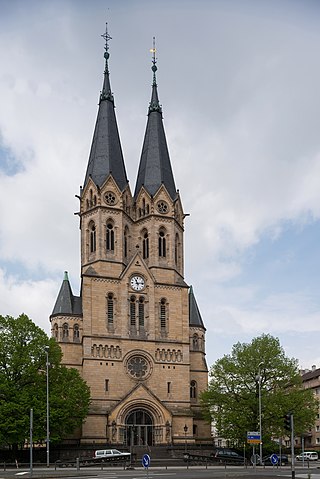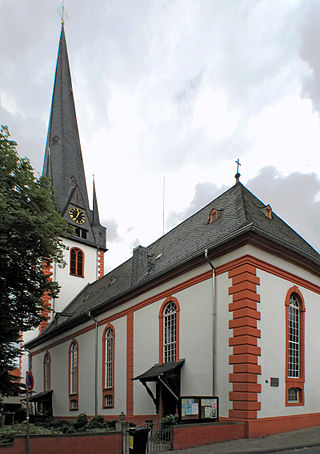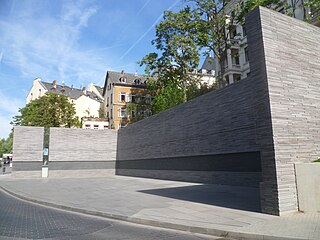34 Sights in Wiesbaden, Germany (with Map and Images)
Legend
Welcome to your journey through the most beautiful sights in Wiesbaden, Germany! Whether you want to discover the city's historical treasures or experience its modern highlights, you'll find everything your heart desires here. Be inspired by our selection and plan your unforgettable adventure in Wiesbaden. Dive into the diversity of this fascinating city and discover everything it has to offer.
Sightseeing Tours in Wiesbaden1. Museum Wiesbaden
The Museum Wiesbaden is a two-branch museum of art and natural history in the Hessian capital of Wiesbaden, Germany. It is one of the three Hessian State museums, in addition to the museums in Kassel and Darmstadt.
2. Kurhaus Wiesbaden
The Kurhaus is the spa house in Wiesbaden, the capital of Hesse, Germany. It serves as the city's convention centre, and the social center of the spa town. In addition to a large and a smaller hall, it houses a restaurant and the Wiesbaden Casino, or Spielbank, which is notable for allowing the "highest roulette stakes in Germany", and where Fyodor Dostoyevsky was said to have received the inspiration for his novel The Gambler.
3. St. Augustine’s of Canterbury
The Church of St Augustine of Canterbury, commonly known as The English church at Wiesbaden, is a Hessian heritage-listed Anglican parish church located at Frankfurter Strasse 3 in Wiesbaden, Germany. Built in 1865 and named in honour of St Augustine of Canterbury, it was designed in the Gothic Revival style by city engineer Theodor Goetz. The church remains historically, socially, and architecturally significant.
Wikipedia: Church of St Augustine of Canterbury, Wiesbaden (EN), Website
4. Lutherkirche
The Lutherkirche is one of four main Protestant churches in Wiesbaden, the capital of Hesse, Germany. It was built between 1908 and 1910 in Jugendstil and in accordance with the Wiesbadener Programm, to a design by Friedrich Pützer. With two organs and good acoustics, it is also a concert venue.
5. Oranier-Gedächtnis-Kirche
The Orange Memorial Church is the second oldest of the five Protestant churches in the Wiesbaden district of Biebrich after the main church. It is located on the banks of the Rhine near Biebrich Castle.
Wikipedia: Oranier-Gedächtniskirche (Wiesbaden) (DE), Website
6. Marktkirche
Marktkirche is the main Protestant church in Wiesbaden, the state capital of Hesse, Germany. The neo-Gothic church on the central Schlossplatz was designed by Carl Boos and built between 1853 and 1862. At the time it was the largest brick building of the Duchy of Nassau. It is also called Nassauer Landesdom.
7. Russian Orthodox Church of Saint Elizabeth in Wiesbaden
The Russian Orthodox Church of Saint Elizabeth in Wiesbaden is the only Russian Orthodox church in Wiesbaden, Germany, and is located on Neroberg. Besides the Russian church there is a parsonage and a Russian cemetery, which is the largest in Europe. St. Elizabeth's Church and its parishioners belong to the Diocese of Germany in the Russian Orthodox Church Outside Russia.
8. Tier- und Pflanzenpark Fasanerie
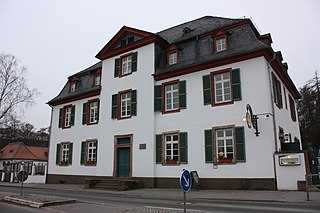
The Pheasantry Animal and Plant Park is operated by the state capital of Wiesbaden and is located outside the city in the northwest in the Wiesbaden city forest on a spacious area of around 23 hectares.
9. Stadtschloss Wiesbaden
Wiesbaden City Palace is a neo-classical building in the center of Wiesbaden, Germany. It was completed in 1841 as the principal city residence of the Dukes of Nassau. The palace has several wings, 145 rooms, and is architecturally integrated with a group of ancillary buildings constructed both before and after it was built. With ornate towers, gables and a slate roof laid in herringbone patterns, the three-story complex lends charm and its name to the central square of Wiesbaden: Palace Square.
10. Mosburg
The Mosburg is an artificial ruin on the edge of the Mosburgweiher, which is fed by the Mosbach, in the Biebricher Schlosspark in Wiesbaden. It is built on the ruins of the old royal palace of Biburc.
11. Biebrich Palace
Biebrich Palace is a Baroque residence (Schloss) in the borough of Biebrich in the city of Wiesbaden, Hesse, Germany. Built in 1702 by Prince Georg August Samuel of Nassau-Idstein, it served as the ducal residence for the independent Duchy of Nassau from 1816 until 1866.
12. Dreifaltigkeitskirche
The Roman Catholic Church of the Holy Trinity in Wiesbaden, Hesse, is a neo-Romanesque church built by Ludwig Becker between 1910 and 1912. Together with the other large inner city churches, it forms a unique testimony to historicist architecture. Due to its location on a hill, its 38 m high west and 65 m high choir flank towers are visible from afar.
13. Kaiser-Friedrich-Therme
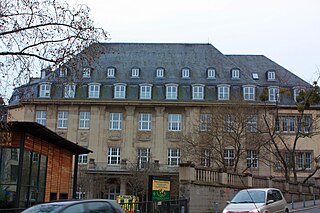
The Kaiser-Friedrich-Therme, originally called Kaiser-Friedrich-Bad, is a historic thermal bath in Wiesbaden, which was built in the years from 1910 to 1913 according to a design by the architect A. O. Pauly in Art Nouveau style. The bath is fed by the Adler Spring, the second largest thermal spring in Wiesbaden after the Kochbrunnen. Its water has a temperature of 64.6 °C.
14. Erbprinzenpalais
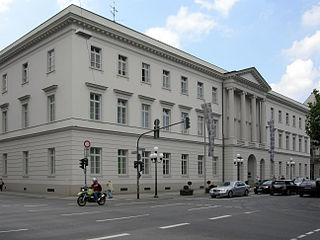
The Erbprinzenpalais on Wilhelmstraße in Wiesbaden is a classicist building built by Christian Zais between 1813 and 1817 for the Hereditary Prince of the Dukes of Nassau. After an eventful history, it now houses the Wiesbaden Chamber of Industry and Commerce, which was founded in 1865.
15. Bergkirche
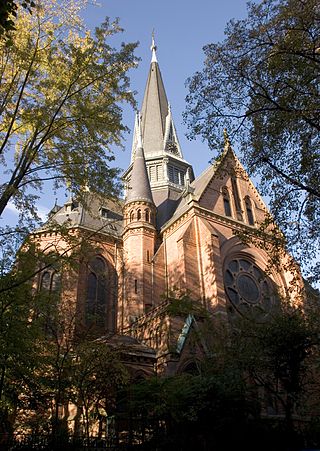
The Bergkirche is one of four main Protestant churches in Wiesbaden, the capital of Hesse, Germany. It was completed in 1879 in Gothic Revival based on a design by Johannes Otzen. The church is focused on having the altar and pulpit close to the congregation, following Luther's concept of a universal priesthood. It also serves as a concert venue for church music.
16. Nerotalanlagen
The Nerotalanlagen is a park in Wiesbaden, Hesse, Germany. The English landscape garden was built in the 19th century in the north of the city, below the Neroberg, along the stream valley of the Schwarzbach creek. The listed historic park features a great variety of plants and several monuments.
17. Mariae Heimsuchung
Mariä Heimsuchung in Wiesbaden, Hesse, Germany, is a Catholic church in Kohlheck, part of Wiesbaden's suburb of Dotzheim, consecrated in 1966. It is dedicated to the Visitation (Heimsuchung). The tall concrete building is a landmark of Wiesbaden. It features two large triptychs by the Wiesbaden painter Otto Ritschl. The parish Mariä Heimsuchung is now part of a larger parish, in the Diocese of Limburg.
18. Hotel Nassauer Hof
Nassauer Hof is a luxury five-star superior hotel in Wiesbaden, Germany, and member of the international association The Leading Hotels of the World as well as the German association Selektion Deutscher Luxushotels. The property was built in 1813 and is situated across from the Wiesbaden Kurhaus and at the end of Wiesbaden's luxury shopping avenue Wilhelmstrasse.
19. Schlosspark
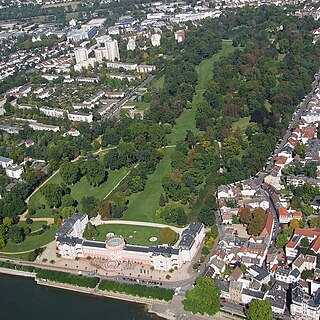
The Schlosspark Biebrich is a park at Schloss Biebrich in Wiesbaden-Biebrich, Hesse, Germany. First designed as a French formal garden, it was expanded changed to an English landscape garden and expanded 1817 to 1823, the last project of Friedrich Ludwig von Sckell. The public park extends north of the building in the valley of the Mosbach creek for around 1,200 m and is 250 m wide. It is the venue for the annual horse show Internationales Pfingstturnier Wiesbaden.
20. Goethewarte
The Goethewarte is a historic, listed observation tower in the northeastern villa area above the city centre of Wiesbaden. It was built in 1932 on the Geisberg north of the city on the occasion of the 100th anniversary of the death of the poet Johann Wolfgang von Goethe according to plans by the government architect Eberhard Finsterwalder and inaugurated on 13 November 1932. The initiator of the construction was the Beautification Association of the City of Wiesbaden, which was able to win the industrialist Wilhelm von Opel as a donor.
21. Neroberg
Neroberg is a hill in Wiesbaden in Hesse, Germany. It offers a panoramic view of the city and is therefore a tourist destination, reached by the historic Nerobergbahn, a funicular railway from the Nerotalanlagen.
22. Leichtweißhöhle
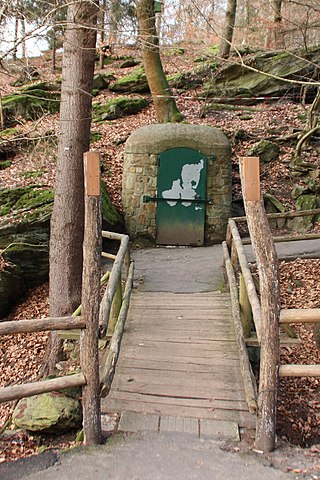
The Leichtweißhöhle is a cave in the Wiesbaden Nerotal. Its name can be traced back to the poacher Heinrich Anton Leichtweiß, who used the cave as a shelter from 1789 to 1791. Forestry workers discovered the cave and Leichtweiss due to rising smoke.
23. Schillerdenkmal
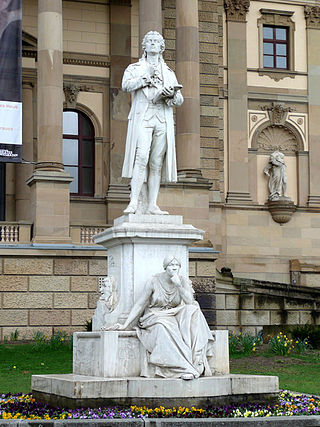
The Schiller Monument in Wiesbaden was erected in 1905 on the occasion of the 100th anniversary of Friedrich Schiller's death, the statue and its accompanying figure were created by the well-known Berlin sculptor Joseph Uphues.
24. Kurpark
The Kurpark, German for "Spa Park", is a public park in the centre of Wiesbaden, Germany, stretching from the Wilhelmstraße to the southern borders of the district of Sonneberg and lying immediately behind the Kurhaus convention center. It was created in 1852 as an English landscape park and includes a lake where boats can be rented, and a 6 metres (20 ft) tall fountain. It has been described as the most beautiful park in Wiesbaden.
25. Thomaskirche
The St. Thomas Church in Wiesbaden is a listed church building built by Rainer Schell in the style of post-war modernism. The congregation, named after the Apostle Thomas, belongs to the Wiesbaden deanery of the Evangelical Church in Hesse and Nassau.
26. Warmer Damm
The Warmer Damm is a public park in the centre of Wiesbaden, Germany, stretching from the Wilhelmstraße to the southern borders of the Kurpark and lying immediately in front of the Hessian State Theater. It was created between 1860 and 1861 as an English landscape park and includes a pond.
27. Wuth'sche Brauerei
The Wuth'sche Brewery in Wiesbaden is part of the Route of Industrial Culture Rhine-Main Wiesbaden. The striking building served as a brewery, schnapps distillery and accommodation for asylum seekers. After the renovation in 2000, a private academy for marketing and communication moved in.
28. Evangelische Kirche Nordenstadt
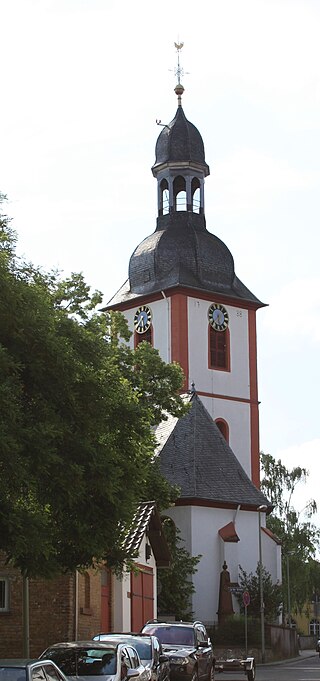
The Evangelical Church Wiesbaden-Nordenstadt is a listed church building in Nordenstadt, a district of the state capital Wiesbaden (Hesse). The parish belongs to the deanery of Wiesbaden in the Rhine-Main provost's office in the Evangelical Church in Hesse and Nassau.
Wikipedia: Evangelische Kirche (Wiesbaden-Nordenstadt) (DE), Website
29. Salzbachkanal
The Salzbach is a right and northeastern tributary of the Rhine that is about 6 km long on its name course, together with its left upper course Rambach, about 15 km long. It drains the area from the main Taunus ridge in the north down through the city centre of Wiesbaden to the mouth of the knee of the Upper Rhine on the southern edge of the city.
30. Sankt Bonifatius
The Church of St. Boniface in Wiesbaden, Hesse, is the main Catholic church in the city. It is dedicated to St. Boniface. The neo-Gothic three-aisled hall church, built by Philipp Hoffmann between 1844 and 1849, dominates the classicist layout of Luisenplatz with its two 68 m high towers.
31. Römertor
The Heidenmauer is the most famous Roman monument in the Hessian state capital Wiesbaden, the Roman Aquae Mattiacorum. According to previous opinions, it was built around 370 AD under Emperor Valentinian I, making it the oldest surviving building in the city. The purpose of this defensive wall cannot be clearly determined to this day, just as the dating cannot be narrowed down more precisely than generally to the late phase of Roman Wiesbaden.
32. Ringkirche
The Ringkirche is a Protestant church in Wiesbaden, Germany, built by the architect and builder Johannes Otzen in the years 1892 to 1894 in the neo-Romanesque style. Its twin tower forms the western end of the broad visual axis of Rheinstraße. The Ringkirche was the first Protestant church in Germany to be built according to the so-called Wiesbaden Program, a church building program that was based on Martin Luther's demands for a "priesthood of all believers". The result was a functional central building that became a model for numerous Protestant church buildings in Germany by the end of the First World War. The trend-setting building from the Wilhelminian period has largely retained its original shape to this day.
33. Hauptkirche
The main church is the oldest of the five Protestant churches in the Wiesbaden district of Biebrich and the place of preaching of the ev. Hoffnungsgemeinde Wiesbaden-Biebrich. It is located at the northern end of the Biebrich Castle Park in the centre of the former village of Mosbach.
34. Gedenkstätte Alte Synagoge
The Memorial to the Murdered Jews of Wiesbaden, colloquially also known as the Michelsberg Memorial or Commemoration by Name in Wiesbaden, the capital of Hesse, is a memorial to the Jewish victims of the Holocaust from Wiesbaden during the National Socialist era.
Share
How likely are you to recommend us?
Disclaimer Please be aware of your surroundings and do not enter private property. We are not liable for any damages that occur during the tours.
